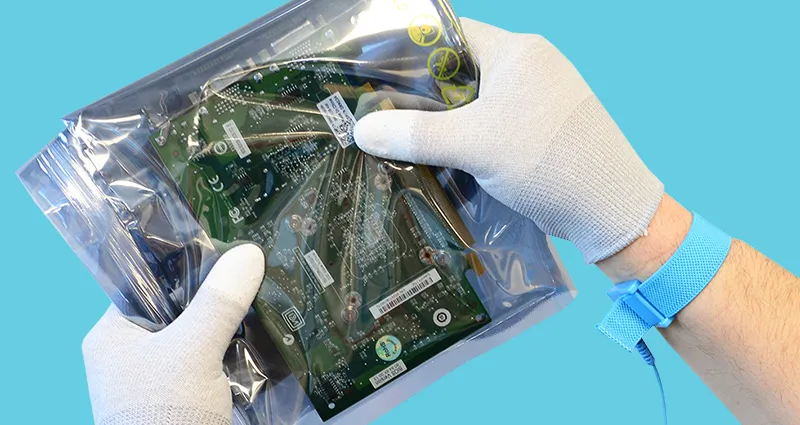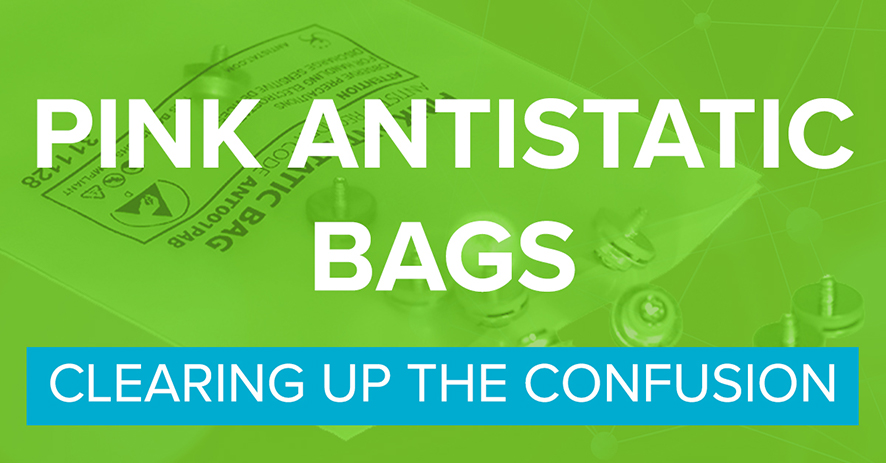Choosing the correct static proof gloves for ESD protection
Antistatic and conductive gloves play a crucial role in preventing electrostatic discharge (ESD) damage while also protecting against grease, dust, and particle contamination. These gloves are essential in high-precision environments such as cleanrooms, electronics manufacturing, and aerospace industries. But how do you know which type of glove is best suited to your needs?
The role of ESD safe gloves in protected areas
In ESD Protected Areas (EPAs), gloves serve two main purposes:
- Handling: Protecting the operator’s hands from contaminants
- Assembly: Preventing contamination of sensitive components
For effective ESD protection, gloves used in an EPA should be either conductive or static-dissipative.
Types of ESD safe gloves
Nitrile gloves
✅ Best for: Electronics, Biotech, Aerospace, Lab Examination, General Purpose
✅ Benefits:
- Made from synthetic latex, making them ideal for latex-allergic users
- Inherently anti-static
- More puncture-resistant than rubber gloves
- Resistant to many solvents and chemicals
❌ Drawback: More expensive than latex or vinyl gloves
Vinyl gloves
✅ Best for: Electronics, Biotech, Aerospace, Lab Examination, General Purpose
✅ Benefits:
- A latex-free alternative
- Soft and comfortable to wear
❌ Drawback: Less durable and more prone to punctures compared to nitrile and latex gloves
Latex gloves
✅ Best for: Electronics, Biotech, Aerospace, Lab Examination, General Purpose
✅ Benefits:
- Affordable and widely available
- Excellent fit and elasticity
- Durable and flexible
❌ Drawback: Not suitable for users with latex allergies
Fabric gloves
✅ Best for: Electronics, Biotech, Aerospace
✅ Benefits
- Available in a variety of types, including hot gloves for heat-sensitive applications and non-slip fabric gloves for superior grip
- Nylon gloves offer stretch, low-lint, and lint-free options
- Reusable and washable without losing anti-static properties, making them cost-effective
❌ Drawback: Less tactile sensitivity than latex or nitrile gloves; not ideal for high-precision tasks
Finger cots
✅ Best for: Electronics, Biotech, Aerospace
✅ Benefits:
- Provide localized ESD protection for fingers while allowing greater dexterity
- Available in multiple materials to suit different applications
❌ Drawback: Limited coverage—only protects fingers, not the whole hand
Ensuring complete ESD protection from gloves to grounding
Choosing the right gloves for your application is essential to maintaining both product safety and operator comfort.
While ESD-safe gloves help prevent electrostatic discharge, they should be used alongside proper grounding methods such as wrist straps for full protection. Learn more about our ESD grounding products here: ESD Grounding Solutions.
🔗 Explore our full range of ESD gloves here > ESD Gloves
📞 Get expert advice today! Contact our sales team at +44 (0) 1473 836 200 or email [email protected]





